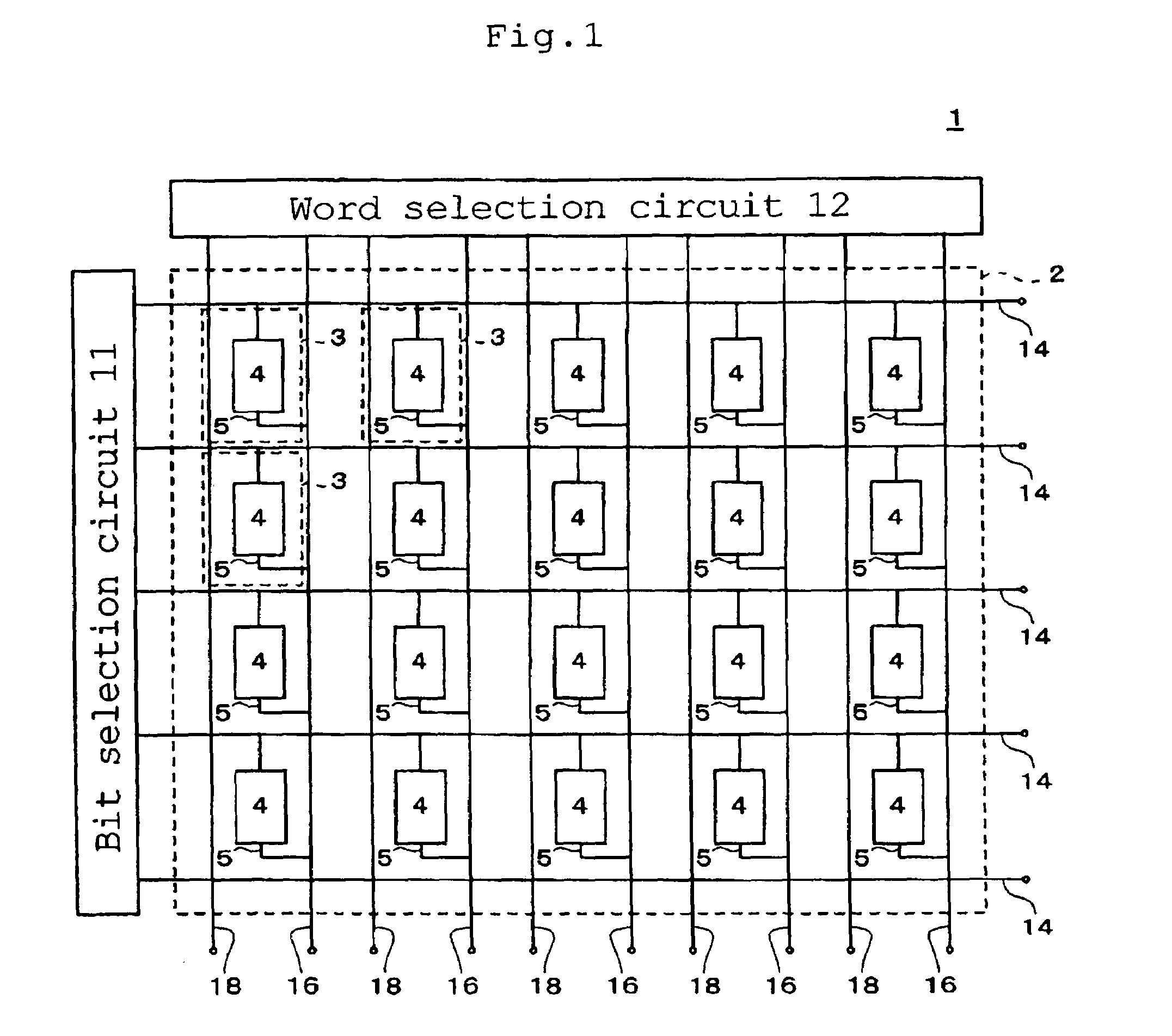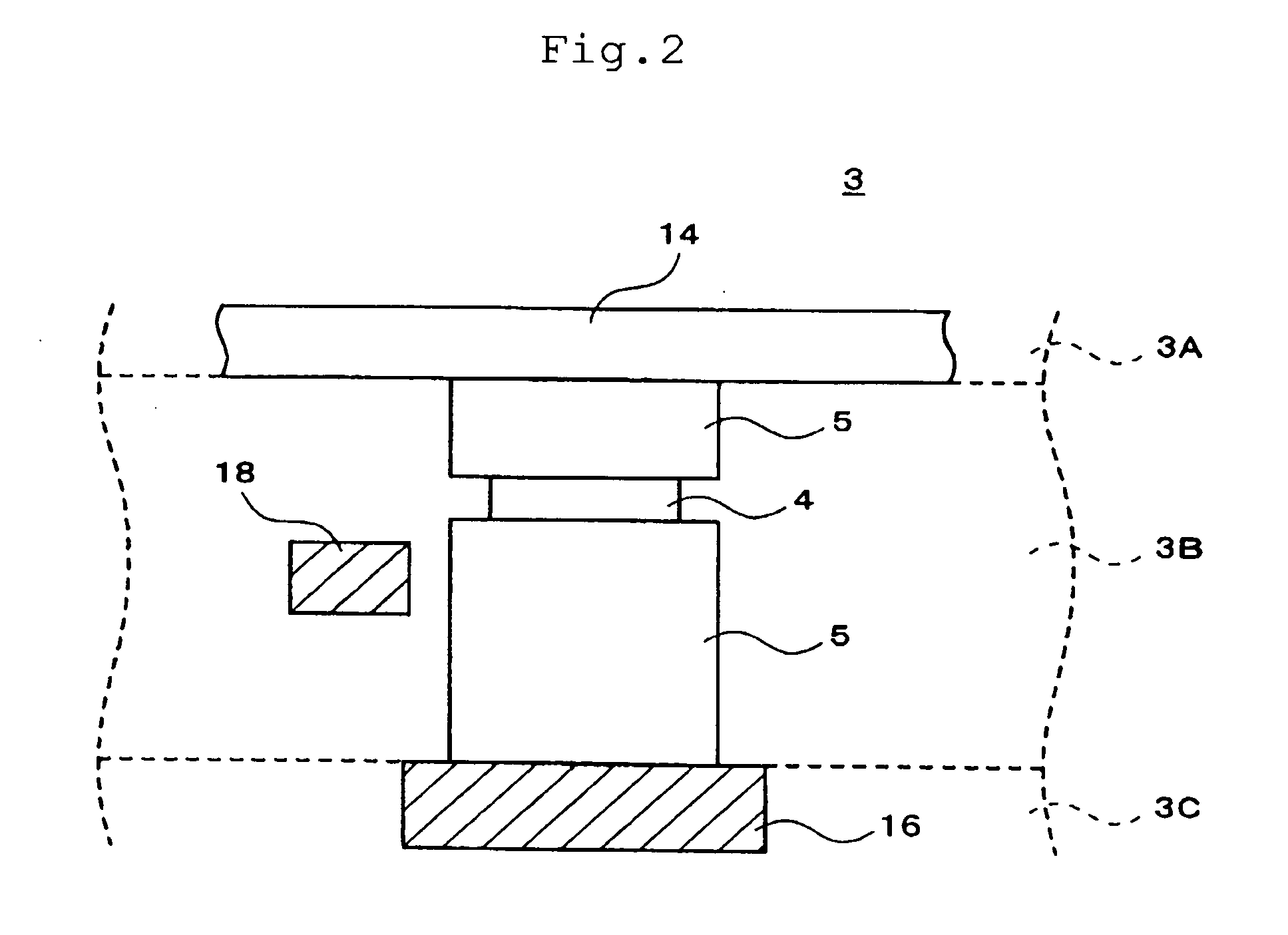Magnetic memory and method for reading-writing information from-to magnetic storage element
a magnetic storage element and memory technology, applied in the field of magnetic memory and memory for reading information from to magnetic storage element, can solve the problems of accidental writing, information loss, and inability to provide sufficient power supply in tablets, portable information terminals,
- Summary
- Abstract
- Description
- Claims
- Application Information
AI Technical Summary
Benefits of technology
Problems solved by technology
Method used
Image
Examples
first embodiment
[0043]FIG. 1 is a conceptual diagram showing the overall configuration of a magnetic memory 1 according to the present invention. The magnetic memory 1 includes a storage unit 2, a bit selection circuit 11, a word selection circuit 12, bit lines 14, word lines 16, and bias lines 18. The storage unit 2 has a plurality of storage areas 3 which are arranged in a two-dimensional array with m rows and n columns (m and n are each an integer of 2 or more). Each of the storage areas 3 has a magnetic storage element 4 and a read-write line 5. The read-write line 5 is disposed so as to connect one of the bit lines 14 with a corresponding one of the word lines 16, and the magnetic storage element 4 is provided at some midpoint of the read-write line 5. Specifically, the read-write line 5 is drawn from the bit line 14 and connected to one end of the magnetic storage element 4. The read-write line 5 is also drawn from the word line 16 and connected to the other end of the magnetic storage elemen...
second embodiment
[0075]In the magnetic memory 101 of the second embodiment, the electrical conduction of the current flowing through the read-write line 105 can be structurally controlled by the transistor 106. Therefore, a sneak current and the like can be avoided, so that the read-write precision can be improved. Moreover, since the yoke 130 is formed around the bias line 118, a sufficient bias magnetic field P can be obtained even when the bias current applied to the bias line 118 is reduced. Hence, the current consumption during a reading operation can be reduced.
[0076]Although the description has been given of the magnetic memories of the first and second embodiments, the present invention is not limited to these embodiments, and various modifications can be made thereto. In the above embodiments, the TMR element is employed as a magnetic storage element. However, for example, a GMR (Giant Magneto-resistive) element may be used which utilizes a GMR effect. The GMR effect refers to a phenomenon ...
PUM
| Property | Measurement | Unit |
|---|---|---|
| read current | aaaaa | aaaaa |
| read current | aaaaa | aaaaa |
| magnetic | aaaaa | aaaaa |
Abstract
Description
Claims
Application Information
 Login to View More
Login to View More - R&D
- Intellectual Property
- Life Sciences
- Materials
- Tech Scout
- Unparalleled Data Quality
- Higher Quality Content
- 60% Fewer Hallucinations
Browse by: Latest US Patents, China's latest patents, Technical Efficacy Thesaurus, Application Domain, Technology Topic, Popular Technical Reports.
© 2025 PatSnap. All rights reserved.Legal|Privacy policy|Modern Slavery Act Transparency Statement|Sitemap|About US| Contact US: help@patsnap.com



